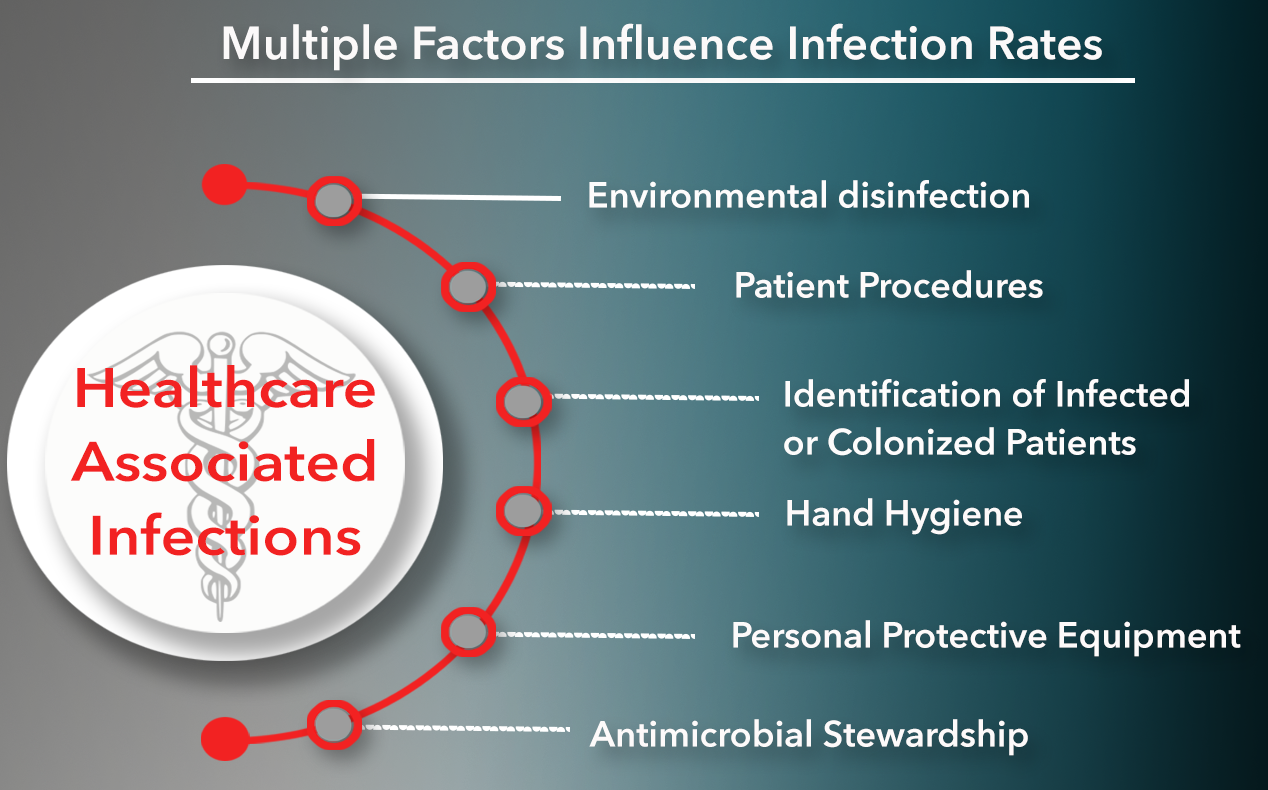Skill Group: Biosafety and Biosecurity
Risk Assessment and Introduction to Personal Protective Equipment (PPE) Part 2
Before You Start …
You may have observed the use of PPE in many situations, including glove use by human doctors, nurses and dentists and perhaps the use of dedicated boots and coveralls in agricultural settings. Throughout this lesson, think about how the uses of these applications of PPE might be the same and how they may differ from their use in clinical veterinary medicine.
Introduction
Our patients are colonized by a vast number of microbes, collectively referred to as microbiota. Although the presence of most of these microbes is critical in maintaining health, some can cause disease, termed pathogens. Many pathogens are infectious to other patients or people (termed zoonoses). Patients shedding or contaminated with pathogens (e.g., disease-causing bacteria, viruses, fungi) can serve as a source of infection for other patients or people.
Through contact, salivation, urination, defecation, vomiting, sneezing or breathing/coughing, animals contaminate their environment with these pathogens, including barns, stalls, clinics, and everything inside these locations, including us. Contaminated people and environments (termed fomite) can then serve as a source for spreading pathogens to other animals and people. When this occurs in a clinic or hospital environment, resulting infections are termed hospital-associated infections (HAIs). There are a number of tools veterinary personnel have at their disposal to combat HAIs, reducing their occurrence by an estimated 30-70%. Here we are discussing one tool that every veterinarian must master if they wish to protect themselves, their staff and patients – the use of personal protective equipment (PPE).
When used correctly, PPE (such as lab coats and non-sterile gloves and gowns) stops us from contaminating our clothing, shoes, skin and hair with pathogens. These are areas and items that if contaminated could lead to infecting ourselves or further spreading the pathogen to other locations, animals or people.
Failure to properly use PPE puts you, your staff and patients at increased risk for disease; in some cases, disease outbreaks can occur in clinics and illness can be very severe, even leading to death. Outbreaks can extend from an affected clinic into the community, resulting in numerous sick animals and people. HAIs can also have other consequences such as financial (to the clinic and owner), legal (to the involved veterinarians), and reputation (clinic and veterinarian). Yes, all of this just from not using the correct PPE when indicated and ensuring we put on and take off the PPE in a manner that stops pathogen transmission.
Infection control and its importance in patient and personnel health
Infection control is a series of practices intended to prevent (or more likely limit) introduction and spread of pathogens within a group of patients and caregivers (staff and clients). Every veterinarian that works with patients or infectious materials should incorporate infection control practices into their day-to-day routines. These practices are integral to optimal patient care and to provide a safe environment for staff and clients.
Key infection control domains, or tools, include:
- Use of PPE;
- Hand hygiene (washing with soap and water or using an alcohol-based hand sanitizer);
- Environmental disinfection;
- Patient procedures (such as appropriate clipping and skin preparation before surgery);
- Identification of infected or colonized patients (such as questioning owners prior to arrival to determine if their pet may have an infectious disease that warrants precautions by hospital staff);
- Antimicrobial stewardship (prescribing antimicrobials in a wise and judicious manner).

Infection control practices should include all of these domains to protect the health of patients and people.
The use of PPE in infection control
As PPE use is one of the areas that veterinary personnel most often underutilize or incorrectly use, it is the target for this learning module. It is important to note that PPE can be used for biological and physical hazards. In this module we are focused on biological hazards (e.g., preventing transmission of pathogens). The use of PPE targeting physical hazards (e.g., gloves for fractious cats, ear plugs when taking a blood sample from pigs) will be addressed elsewhere in your education.
As noted by a number of studies, veterinarians and staff often do a poor job of using PPE when indicated; less than 40% of veterinarians and staff reported using the appropriate PPE for given situations. When observing PPE removal by healthcare providers in one study, almost 50% inadvertently contaminated their skin or clothing.
The purpose of PPE use is to:
- Prevent pathogen contamination of people and clothing;
- Prevent contamination of the environment;
- Prevent spread of pathogens;
- Prevent zoonotic pathogen transmission to personnel.
Throughout the rest of this module, we will discuss various types of PPE and protocols for putting on (donning) and taking off (doffing) PPE. It is important to realize that the order and specifics of donning and doffing PPE may vary with the level of protection, type of PPE used and configuration of the facility. You will encounter different protocols in different practices and even services within a facility. Regardless, the primary goals of PPE use are the same (listed above).
In order to become proficient in selecting PPE items for a given situation and appropriately donning and doffing these items, you must first be familiar with a few key infectious disease concepts. In the next part of this lesson, we will review the following:
- Routes of pathogen transmission;
- Ability for pathogens to survive in the environment.